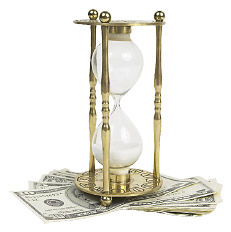APR or Annual Percentage Rate

APR: A Very Useful Number
The APR rate of a loan is a very useful number because it helps you compare the cost of different loans. Usually, the higher the APR on a loan, the more you'll have to pay (assuming that all other things are equal). The APR does not include all the costs of a loan, but it tells you about the most important one.
If you are looking around for a loan, you usually want as low an APR rate as possible. However, you should also be on the look out for other costs, such as administration fees, legal fees or penalties should you decide to pay off the loan early.
The Term APR Explained
The letters APR stand for "Annual Percentage Rate" and provide an indication of how expensive a loan is. The APR tells you the rate at which you will be charged interest.
The term APR has a legal significance, so that you can compare the cost of loans easily. It is calculated using a complex formula that is prescribed by the Consumer Credit Act (1980). In fact, there are three different ways of calculating the Annual Percentage Rate, but whichever is used lenders must tell you the APR before you sign a loan agreement.
Annual Percentage rates provide an indication of how much interest you will be charged on a loan. You can compare APR rates between different loans to provide a rough indication of which is more expensive.
Other costs
Whilst the Annual Percentage Rate gives an indication of how expensive the interest on the loan is, there may also be other costs included in the loan that are not reflected in the APR. These might include early settlement/redemption penalties, arrangement fees (the bank charges you for the administration of setting up the loan)or legal fees (you may have to engage a solicitor, for example when arranging a mortgage).
Nevertheless, the Annual Percentage Rate provides a good benchmark by which to compare the main cost, the interest charge, of different loans.
APR Compared with Other Rates
Lenders are allowed to quote rates other than the Annual Percentage Rate, and sales people often like to quote a "flat rate" because it can make the loan sound cheaper than if they quoted the APR. This is not the case, however, because a "flat rate" uses a different calculation to work out your interest than an Annual Percentage rate.
To compare loans you should use the APR rate. However, if you are quoted a fixed rate then its APR will usually be about double the rate quoted. That is, if you are quoted a Fixed Rate of 5% then the APR will actually be in the region of 10%.
A rate quoted as an APR is usually much cheaper than a rate quoted as Fixed. For an illustration of this, you can see a simple worked example on our APR and Fixed Rate comparison page.
©2013 Team Technology. Privacy policy and cookies.

